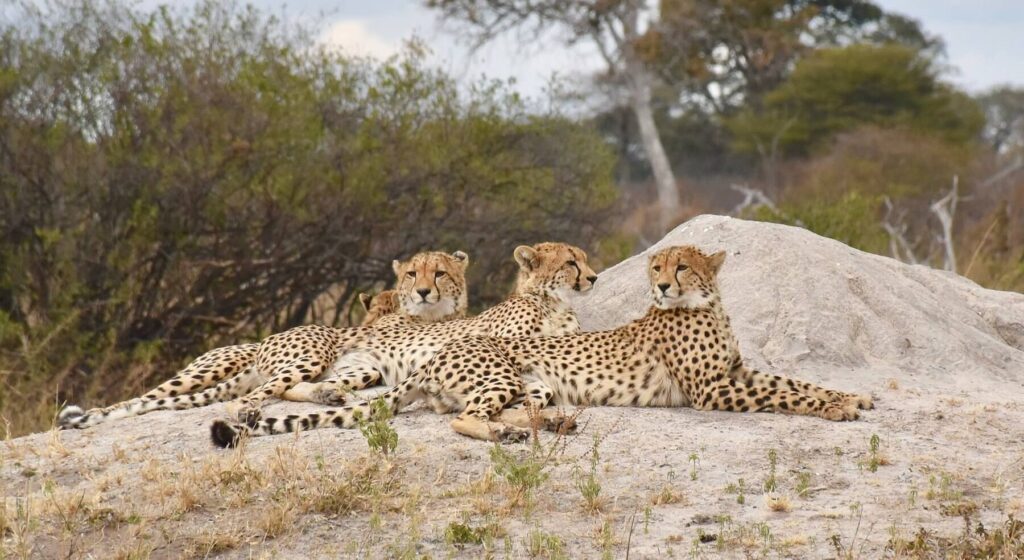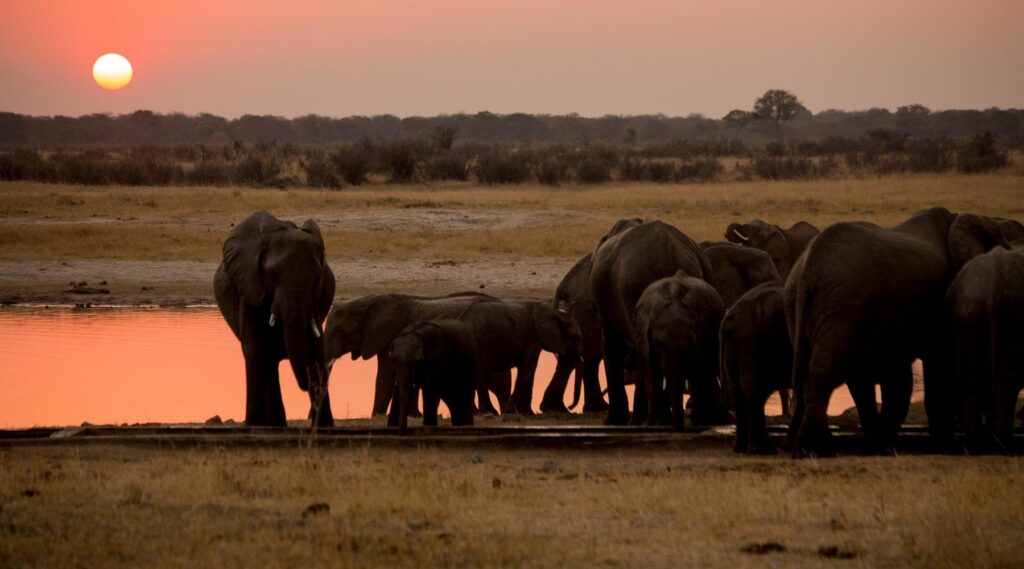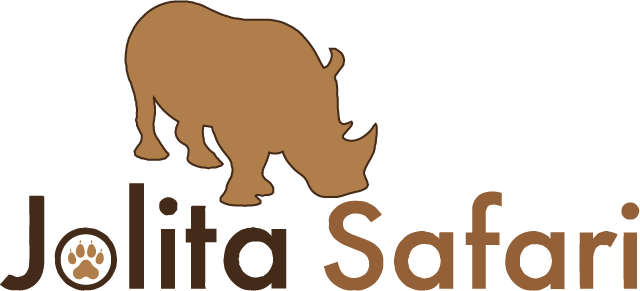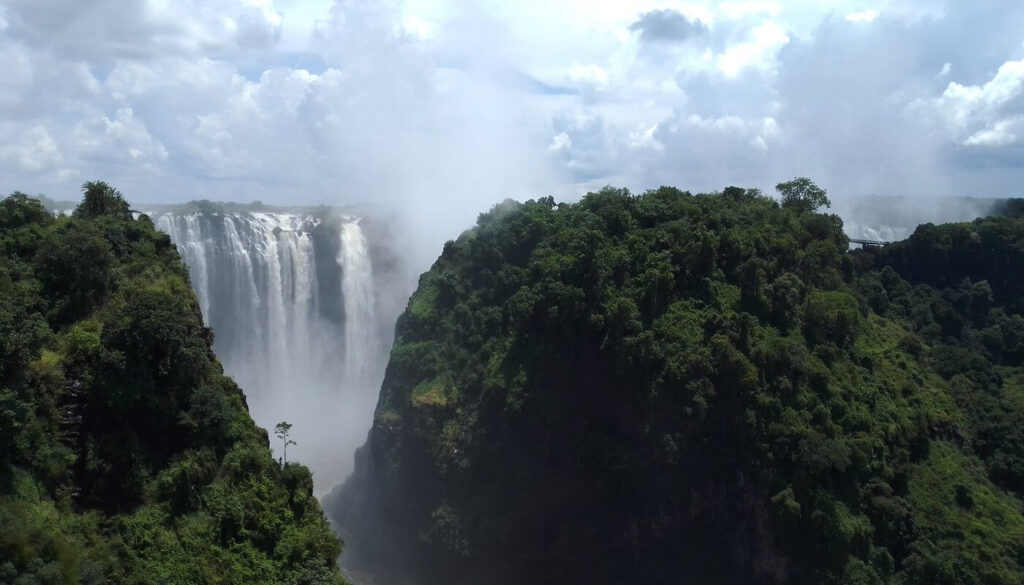Feel the unique calm and stillness of the African Bushveld envelope you as you walk in the footsteps of the warrior-king Mzilikazi, whose private hunting grounds are now the largest National Park in Zimbabwe. The only sounds are the snap of branches and rustle of leaves as the Elephants glide silently through the bush and the distant soulful cry of the Fish Eagle…Welcome to Hwange National Park.
Wild and Wonderful Hwange
Hwange National Park is situated in the north western corner of Zimbabwe, just south of the Victoria Falls, and covers 14,650 km sq (about the size of Wales or Belgium!). It borders Botswana’s Makgadikgadi and Chobe ecosystems to form one of Africa’s last remaining great unfenced wilderness areas. The Park is home to the Big Five and one of Africa’s largest Elephant populations, as well as over 100 other species of animals which are free to roam this African wilderness as they have done for centuries. Come with us on an unforgettable African adventure in Hwange National Park.
A Little Background
Hwange is essentially a dry Park; the habitat is mainly teak and mopane woodland, on Kalahari sand which has been blown into the region from Botswana. It receives a very low rainfall, and most of the animals rely on man-made water holes, dams, and boreholes during the dry months. There are over 60 of these water holes, which are linked to seasonal pans, and they require constant maintenance, a serious drain on the limited resources. In recent years, these water holes and pumps, the very life-blood of the Park, are maintained by a few private organisations such as “Friends of Hwange” and “Save Hwange”- all donations to these organisations contribute to the continued existence of this National treasure.
The Hwange Elephants, the Predators and other Highlights
The Hwange Elephants
Hwange has one of the largest populations of African Elephants on the continent. These vast herds utilize both Hwange and Chobe National Park for feeding, and numbers are thought to be anywhere between 20,000 and 40,000 – it is very difficult to get accurate numbers since the animals in both National Parks can move freely back and forth. You are guaranteed excellent sightings, and they are often seen congregating in huge numbers around the man-made water holes where they can be easily observed drinking, bathing and cavorting.
The Predators
The high density and diversity of animals in Hwange means that there are also a good number of predators lying in wait! You can expect good sightings of Lion and Cheetah, and you may be lucky to see the elusive Leopard. In addition there are good numbers of both Spotted and Brown Hyena and one of Southern Africa’s largest populations of the highly endangered Wild Dog.

The Big Five
Hwange is one of the few National Parks in Africa where you can still enjoy the spectacle of watching large herds of Buffalo thundering across the landscape, and they are also regular visitors at the water holes. Rhino and Leopard are present, but more difficult to spot.
The Bird Life
With over 400 recorded species of resident and seasonal migratory birds, Hwange is a great destination for bird watchers.
Safaris in Hwange National Park
Hwange National Park covers a vast area which contains 3 distinctly different types of habitat, so you should aim to spend a couple of nights in each of the three areas to get good sightings of the animals that frequent each area. Walking Safaris, Camping Safaris and Photographic Safaris are all available. All the camps and Lodges in the Park do morning and evening game drives and Night drives are available in a couple of the private concessions in the Park. Another good option for an excellent Safari in the region would be to combine Victoria Falls, Hwange and Chobe National Parks, spending a few days in each. Your Tour operator can put together the perfect itinerary to suit your particular interests and budget. A big plus is that Hwange is currently one of the most affordable Safari options in Southern Africa.

Other Activities
Photography is great at Hwange; all you need to do is set up your tripod at one of the waterholes and wait for the game to come to you!
Walking trails with a trained (and armed!) guide are a wonderful way to see the smaller creatures that inhabit the Park – see how termites build their mound, watch a dung beetle at work or learn about the flora. There is always the possibility that you will get a surprise just around the next corner…
If you happen to visit in October you can volunteer to be part of the Annual Game Count – an unrivalled game viewing experience where you will spend 24 hours counting animals at a waterhole during a full moon period in October.
Accommodation in Hwange National Park
The accommodation options in Hwange National Park run the full gamut from budget and basic to lovely and luxury! Many of the camps and lodges are situated close to water holes and you can enjoy your sun-downers on site while watching the animals come down to drink. There is a selection of Lodges on private concessions on the borders of the camp and these are able to offer Night drives and some off-road viewing opportunities. Dinner is generally served under the African skies in an outdoor Boma around the campfire where you can admire the stars and listen to the sounds of the wild.
How to Get There
There are scheduled flights to Victoria Falls and Livingstone Airports, followed by a drive of approximately 60- 90 minutes. Alternatively, you can arrange a charter flight to Hwange Airstrip.
Best Time to Visit
The dry winter months (June to September) generally offer the best game viewing as the animals are forced to make use of the water holes. However, after the summer rains the natural pans fill up and the whole region turns green; this is when many plains animals migrate here to give birth and there are an abundance of baby animals; predator activity and bird watching is also at a peak during this time, from December to March.

